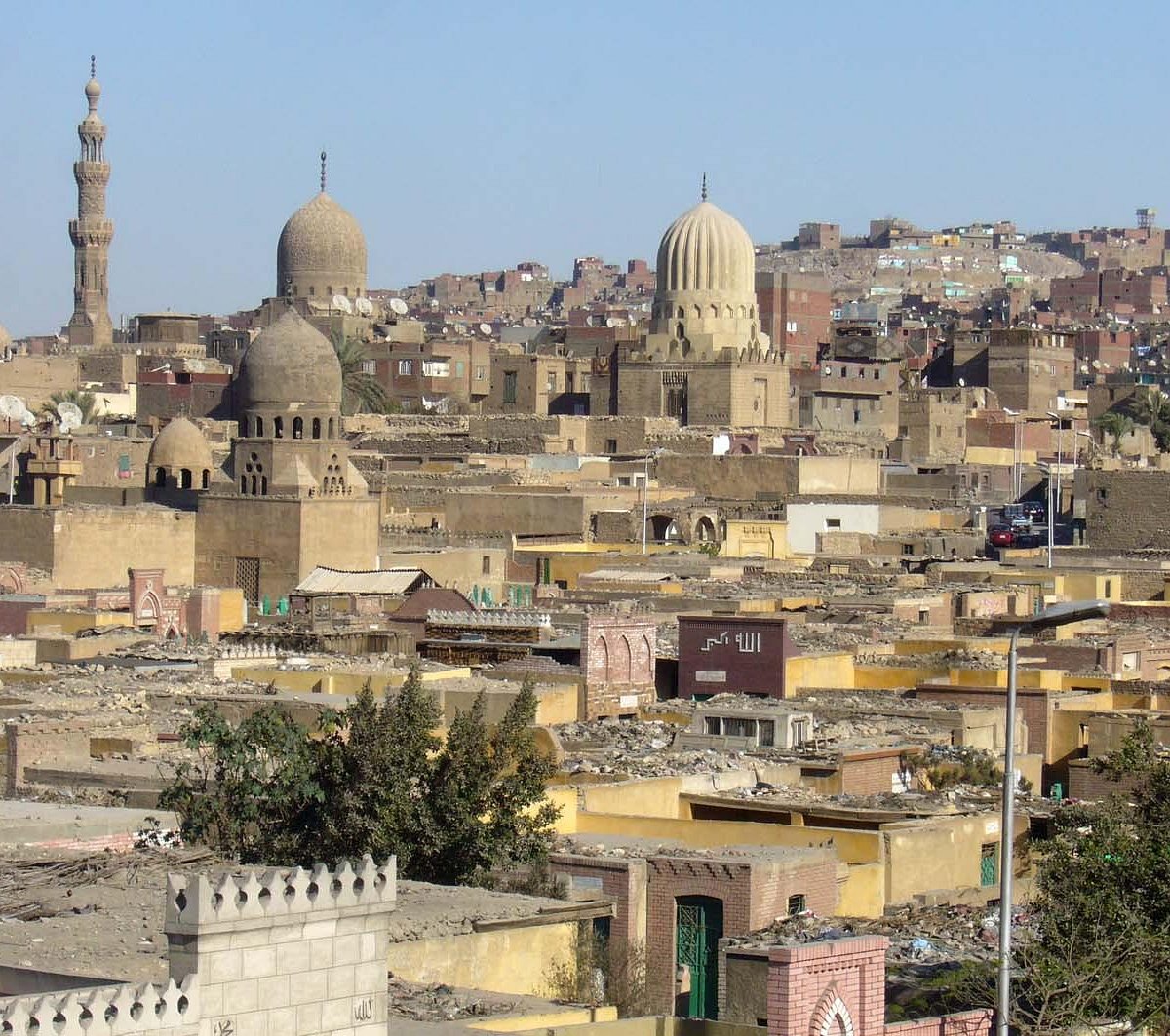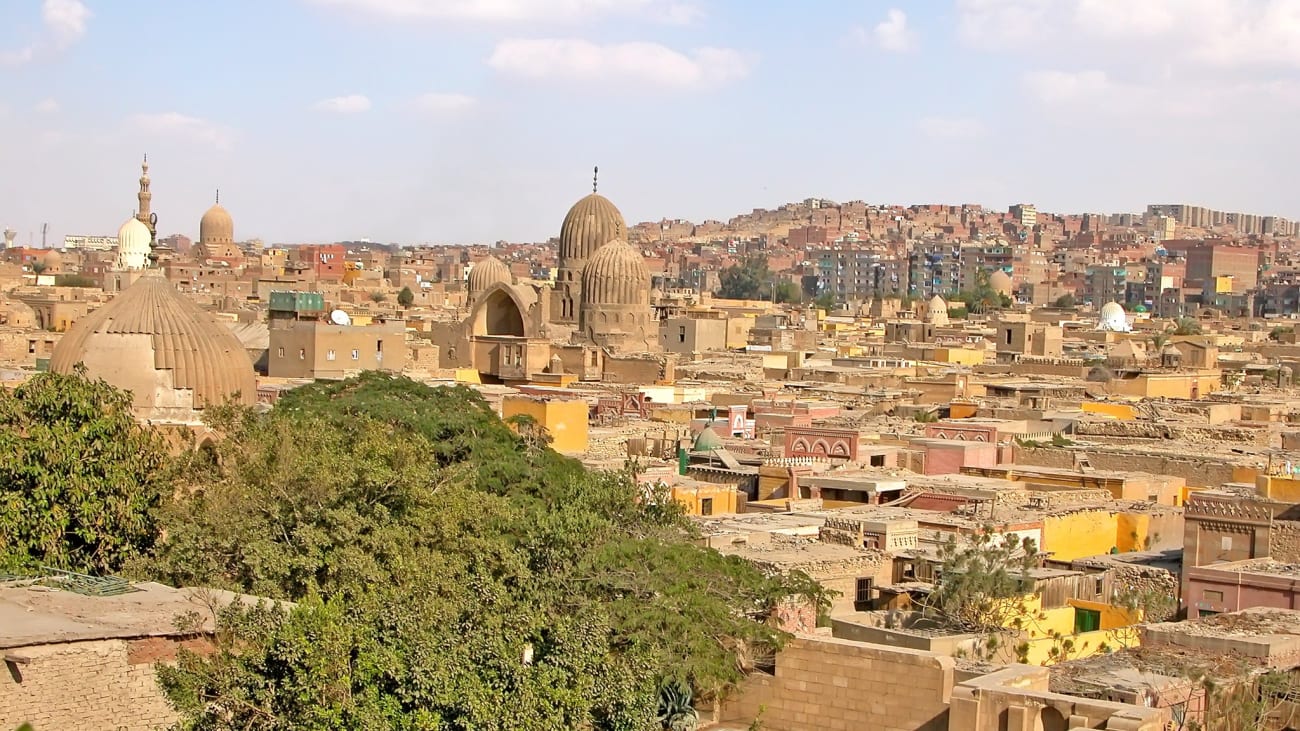Cairo's City of Dead: Living Among History's Whispers

Welcome to the captivating world of Cairo's City of Dead, where history and modernization intersect exquisitely. This article introduces you to the concept of the City of Dead, its historical significance, and why it is a must-visit destination for those who love culture and history.
What is Cairo's City of Dead?
Cairo's City of Dead is a vast Islamic necropolis and a residential quarter in Cairo, Egypt. It is a maze of tombs and mausoleums of the Mamluk and Ottoman period, which have been turned into housing for the poor. This neighbourhood is home to more than 500,000 people and is one of Cairo's largest living quarters.
The City of Dead has evolved into a dynamic hub where the living and the dead coexist uniquely. The tombs have been transformed into unique houses, and the streets, once burial sites, are now avenues of life, with residents going about their daily activities.
The historical significance of Cairo's City of Dead
The City of Dead has massive historical significance, dating back to the Mamluk era in the 13th century. It was primarily created as a final resting place for the caliphs, sultans, and the affluent, making it not just a place of mourning but also a symbol of power and prestige.
Over the years, it transformed into a place to honour the dead, and shrines were constructed around tombs, where visitors would pay homage to their loved ones.
In the modern era, the City of Dead has been redefined as low-cost housing for the poor. The tombs and mausoleums have been repurposed into living quarters, giving new life to this historic site. As such, the City of Dead is not just another historic site but a living testament to the resilience of the human spirit.
Exploring the City of Dead is not just a window into the past but also an insight into modern-day Cairo, reflecting the city's living history. The City of the Dead presents a social and cultural phenomenon that cannot be found anywhere else globally, which is why it is worth visiting.
The History of Cairo's City of Dead
Exploring Cairo's City of Dead takes you on a journey through history, from its origins in the Mamluk era to its current position as a modern-day residential neighbourhood. This article delves into the history of Cairo's City of Dead, looking at its evolution and historical landmarks.
Origins and Evolution of Cairo's City of Dead
The City of Dead is a vast Islamic necropolis located in the heart of Cairo, Egypt, home to more than 500,000 people. Its origins date back to the Mamluk era in the 13th century when it was created as a final resting place for the caliphs, sultans, and affluent members of society. However, over time, it evolved into a place of mourning, honour, and remembrance for all Egyptians.
During the Ottoman period, the tombs and mausoleums in the City of Dead were transformed into unique houses, with the living and the dead coexisting uniquely.
Historical landmarks in Cairo's City of Dead
The City of Dead is a living testament to the resilience of the human spirit, with many structures holding massive historical significance. One of these landmarks is the Beit El-Kritly, built in 1737, a double-storied building named after its original owners. It is built on top of a mausoleum and contains many rooms, similar to a palace.
Another landmark is the Mosque and Mausoleum of al-Ashraf Barsbay, a Mamluk sultan who reigned from (1422-1437). The mausoleum is located in a beautiful garden and is surrounded by charming buildings in the classic Islamic style. The Tomb of Sayeda Nafisa is another significant landmark and a popular pilgrimage place for many Muslims.
Cairo's City of the Dead is not just a living museum that showcases Egypt's rich history and culture. Still, it is also a place of hope, resilience, and human ingenuity. The tombs, once a place of mourning, have become a symbol of life as residents carry on with their daily business amid the dead. Visiting Cairo's City of Dead is a window into the past and a chance to experience a unique cultural phenomenon that cannot be found anywhere else.
Living in Cairo's City of Dead
Cairo's City of Dead is not just a place of historical landmarks but also a modern-day residential neighbourhood home to over 500,000 people. This article explores what it's like to live in the City of Dead, looking at daily life, challenges, and opportunities for its residents.
Daily life in Cairo's City of Dead
Life in the City of Dead is unique, with the living and the dead coexisting remarkably. The narrow, maze-like streets are lined with houses built on top of tombs and mausoleums. The houses range from small apartments to large villas, and many have been passed down from generation to generation.
The streets are bustling with people doing their daily business, children playing, street vendors selling their wares, and locals socializing. Despite the poverty and lack of basic services, residents have created a vibrant and tight-knit community full of life.
Challenges and opportunities for residents
One of the main challenges facing residents is the lack of basic services, such as running water, sewage systems, and garbage collection. The government has been slow to provide these services, leaving residents to fend for themselves. However, residents have come together to find innovative solutions to these problems, such as building their own water pipes and garbage collection systems.
One of the opportunities of living in the City of Dead is the proximity to Cairo's city centre. Many residents work as street vendors, labourers or shopkeepers in the main city, with some even running successful businesses. This proximity has allowed residents to be part of Cairo's economic and social fabric despite living in a unique neighbourhood.
Living in Cairo's City of Dead is not without its challenges, but it is a unique and vibrant community that has evolved over centuries. Despite the poverty, lack of basic services, and living on top of tombs, residents have created a resilient and tight-knit community full of life.
Architecture and Design
Living in Cairo's City of Dead means experiencing a blend of ancient history and modern-day residential living. The unique architecture and design of the neighbourhood make it a fascinating place to explore. This article delves into the architectural styles and design elements that make the City of Dead unique.
Unique architectural styles in Cairo's City of Dead
The houses in the City of Dead are built on top of mausoleums and tombs, creating a unique architectural style. The narrow streets are lined with houses ranging from small apartments to large villas. These houses have a distinct style, with intricate facades, ornate balconies, and unique window designs. The prevalence of Islamic architecture in the City of Dead is because these structures were built during the Islamic Golden Age.
Design elements of mausoleums and tombs
The mausoleums and tombs in the City of Dead are just as fascinating as the houses built atop them. These buildings have intricate designs and elaborate decorations, with many featuring domes and minarets. The materials used to construct these structures vary; some are made from wood, and others from stone or marble.
The inside of the mausoleums and tombs often feature beautiful calligraphy and colourful tiles. Some mausoleums are also home to shrines, where people come to pay their respects to the deceased. All of these design elements come together to create a unique architectural landscape that is both beautiful and haunting.
Living in Cairo's City of Dead means immersing in a world where history and modern living converge. The architecture and design elements of the neighbourhood are a testament to its rich history and unique cultural identity.

Religious Practices
If you are living in Cairo's City of Dead, you'll observe how deeply ingrained religious practices are in the daily lives of locals. The neighbourhood is famous for its Islamic heritage and the religious activities within its boundaries.
Islamic religious practices in Cairo's City of Dead
The City of Dead is populated mainly by Muslims, and Islamic religious practices are evident all around. You can hear the Adhan, the Muslim call to prayer, echoing through the alleyways and streets five times daily. Every Friday, worshippers from across the city flock to the many mosques in the neighbourhood to attend the Friday congregational prayers.
Another Islamic ritual you'll notice in the City of Dead is the recitation of the Quran. Many residents gather in mosques and mausoleums to recite the holy book or attend Quranic study groups known as Halqas.
How Locals Honor Deceased Loved Ones
Death is an inescapable reality that everyone has to face, and locals in the City of Dead have their unique way of honouring their deceased. Visiting the graves of loved ones and offering prayers for them is a common practice in the neighbourhood. It's a way of showing respect and paying tribute to those who have passed away.
Another notable way locals honour the deceased is by holding religious ceremonies to mark the anniversary of the death of loved ones. These events include Quranic recitation, charity giving, and feeding the poor. It's a meaningful way for locals to remember the departed and show their love and respect for them.
The deeply-rooted religious practices in the City of Dead are a testament to the neighbourhood's commitment to preserving its cultural heritage. It is an aspect of living in the area that gives it a unique character and charm.

Tourism and Cultural Significance
Cairo's City of Dead is a tourist attraction
The City of Dead is undoubtedly one of Cairo's most famous tourist attractions. Visitors can enjoy the stunning architecture in the neighbourhood, which features intricate mausoleums and tombs dating back to the Mamluk and Ottoman eras. It's an opportunity to explore a different side of Cairo where ancient traditions and modern life intersect.
Tourists can also witness firsthand how the locals honour their deceased loved ones by attending religious ceremonies and visiting the graveyards. It's an experience that allows visitors to appreciate Egyptian culture and locals' unbreakable bond with their history and traditions.
Cultural significance of Cairo's City of Dead
The City of Dead is not just a tourist destination; it's also a cultural landmark that carries immense significance to the locals. The religious practices, rituals, and traditions observed in the neighbourhood are a testament to the locals' commitment to preserving their cultural heritage.
Islamic religious practices are prevalent in the City of Dead, and locals are proud of their Islamic heritage. The neighbourhood serves as a symbol of their steadfast faith and commitment to their religious beliefs. In addition, the many mosques and mausoleums in the neighbourhood showcase the architectural brilliance of Islamic civilization.
Overall, the City of Dead is integral to Cairo's cultural identity. It's an opportunity for tourists to immerse themselves in a unique cultural experience they can't find anywhere else. But beyond tourism, the neighbourhood serves as a reminder of the Egyptians' deep-rooted traditions and sacred beliefs.
Preservation Efforts
Efforts to preserve and restore Cairo's City of Dead's historical and cultural significance
Over the years, various restoration efforts have taken place to preserve buildings, tombs, and other cultural structures within the City of Dead. As part of the efforts, civil society organizations have launched several restoration initiatives to preserve specific monuments.
The National Organization for Urban Harmony, for example, launched a program to restore the monumental Sabil of Abd al-Rahman Katkhuda. At the same time, the Aga Khan Trust for Culture has rehabilitated some of the neighbourhood's buildings and tombs. These programs have restored the aesthetic appeal of the monuments and helped attract tourists, making it easier for the community to continue supporting the restoration initiatives.
The role of government and NGOs
The Egyptian government recognizes the value of the City of Dead and its cultural heritage. They have, therefore, been working closely with various NGOs to carry out restoration and preservation efforts. In addition, the government has also introduced new regulations for the protection of the neighborhood's legacy.
Several documents, including the World Heritage Convention and the Unesco 2003 Convention, have provided guidelines on protecting cultural heritage, providing a framework for preserving the City of Dead. The Ministry of Culture also launched a project called "Living Human Treasures," which recognises people with exceptional knowledge and skills related to the City of Dead's heritage.
Overall, the preservation efforts to conserve Cairo's City of Dead's historical and cultural significance have been commendable. However, continued efforts are necessary to ensure the neighbourhood's legacy is not lost and the community remains proud of its rich cultural heritage.

Controversies and Challenges
Ongoing challenges facing Cairo's City of Dead
One significant challenge facing the City of Dead continues to be the lack of infrastructure for the community's residents. The neighbourhood's buildings and alleyways remain largely unchanged, with few resources dedicated to renovation. This dearth of infrastructure is compounded by problems related to poverty, public health, and education.
Another issue is that Al-Qarafa Cemetery, a major attraction within the City of Dead, remains open to funerals. The constant flow of funeral processions disrupts the community's peace and brings in unwanted guests. Additionally, locals have expressed concern about the cemetery's integrity and the safety of visitors.
Disputes over the use of land and illegal settlements
The City of Dead has also faced controversies over the use of land. The government has struggled to control illegal land grabs by residents who build additional floors on homes or repurpose abandoned structures. These illegal settlements present multiple hazards, including fire, structural damage, and public health risks.
Furthermore, the government has faced disputes with residents over whether the community should be repurposed for other uses. Some local officials have proposed turning the City of Dead into a tourist attraction, involving a significant overhaul of neighbourhood structures. Others feel that any changes to the community should be minimal, aimed purely at preserving the area's rich cultural heritage.
While there are efforts to preserve Cairo's City of Dead, significant challenges must be addressed. To ensure the community's legacy endures, addressing the ongoing challenges and disputes that threaten the neighbourhood's cultural heritage is critical. Through continued effort, the City of Dead can continue to be a cultural legacy for generations.

Despite efforts to preserve the rich heritage and legacy of Cairo's City of Dead, many challenges and disputes threaten the community. Addressing these issues is essential to ensure that the community's history and traditions thrive for generations.
Future prospects for Cairo's City of Dead
The City of Dead prospects can be significantly improved by addressing the mentioned challenges. The government must provide infrastructure and resources to renovate the area and discourage illegal settlements. Any changes towards tourism development should be done to preserve the community's cultural heritage rather than erasing it. By doing so, the prospects of Cairo's City of Dead look bright.
